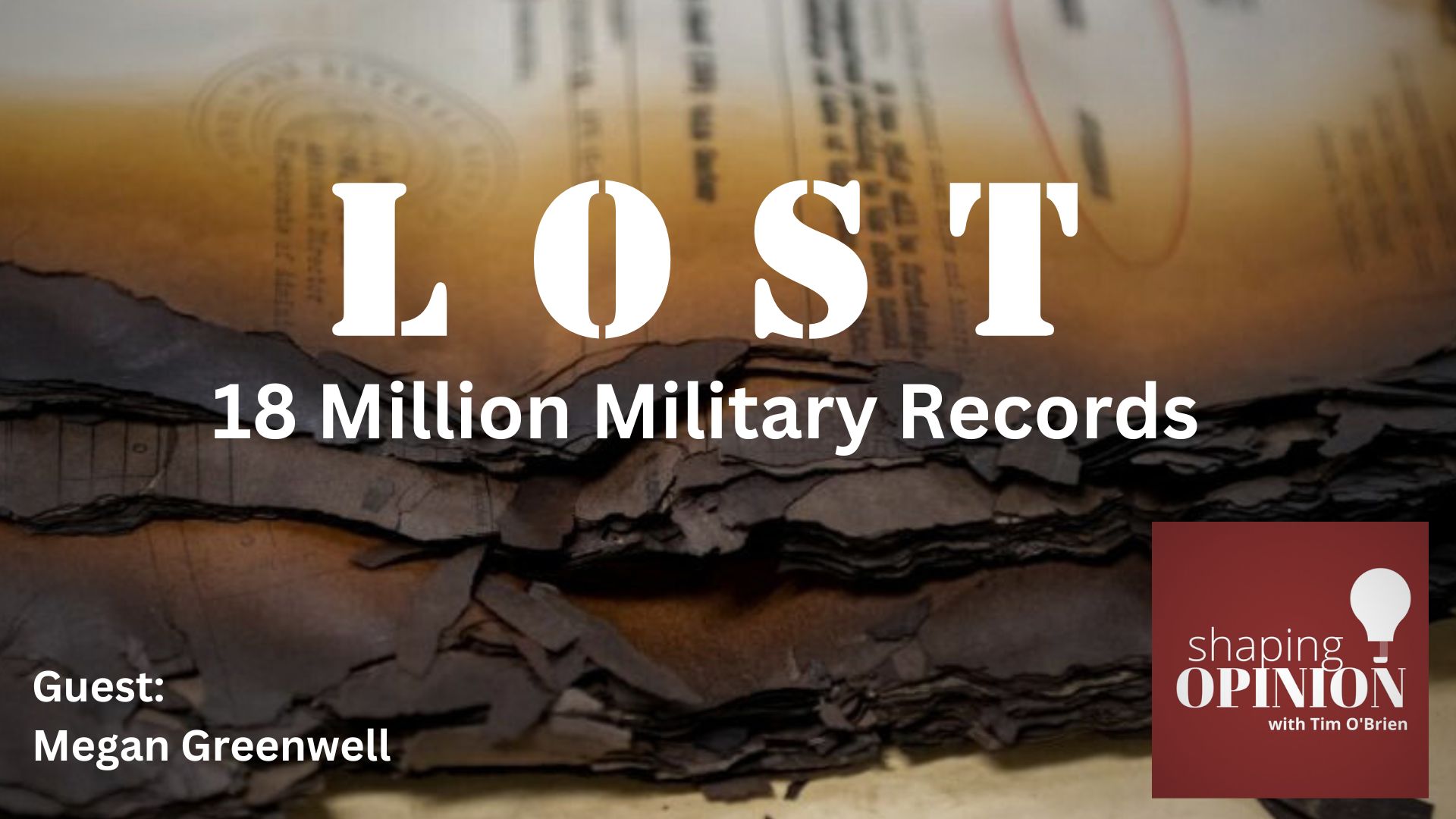Journalist Megan Greenwell joins Tim to talk about her comprehensive reporting for Wired Magazine on the 1973 St. Louis Military Records Fire where in two days, the nation lost the only roughly 18 million records of U.S. military personnel from the first half of the 20th Century. Back when paper was the primary way we kept records, the archives contained the data on millions of military personnel from U.S. military personnel going back to 1912. Megan talks about the fire, the people still working to preserve those documents, restore them and extract information from them, and through it all, her personal connection to this story.

Not long after World War II, in 1951, the Department of Defense decided to create the National Personnel Records Center to store personnel records for the military. The DOD joined with the St. Louis Federal Records Center and the General Services Administration to build a facility to house those records in St. Louis.
The military records represented those who served in the American military or in federal civil service, starting in 1912. The National Archives and Records Administration would oversee the data.
The DOD had similar facilities for the Navy and other records in New York, and in Alexandria, Virginia, respectively. Here’s the thing. In one of those facilities, they installed sprinkler systems for fire suppression. In the other, they did not install sprinkler systems for fear that if the sprinkler system went off due to a malfunction or false alarm, records could be damaged or destroyed.
In the new facility in St. Louis, the DOD decided to go with a design that excluded sprinkler systems, and heat and smoke detectors.
Each floor of the facility featured large open spaces for records storage without firewalls or other measures to contain a fire.
The St. Louis records storage facility sat on 70 acres, and had six floors. It was built of concrete, and sat under a roof that was supported by concrete columns. Walls were of aluminum and glass.
The building was completed in 1956 by the U.S. Army Corps of Engineers. When it opened, the building contained roughly 38 million military personnel records.
Technology didn’t change much over the next 17 years, at least in how the DOD stored personnel records. Paper.
So, fast forward to 1973. Starting on July 12th, 1973, a fire would erupt at the building and last for four days. By 1973, the building housed over 52 million records. 52 million individual pieces of American history. And as mentioned, almost 18 million of those records were lost.
And that’s where our story begins. Megan Greenwell is a journalist who likes a challenge. So, she decided to dig into the story as any old-time journalist would. Lots of shoe leather.
Links
- Megan Greenwell (Website)
- Megan Greenwell (Wired Page)
- The Night 17 Million Precious Military Records Went Up in Smoke, Wired
- The 1973 Fire, National Personnel Records Center, The National Archives
If you have a question about your own or a family member’s records or want to explore the process of requesting military records, this is the U.S. Veterans Administration starting point:
About this Episode’s Guest Megan Greenwell
 Megan Greenwell a freelance editor and writer with extensive experience in all areas of print and digital media. Currently freelancing, she divides her time between writing, editing, consulting, and teaching. She is particularly passionate about narrative features, exploring new revenue models for journalism, leading teams working across platforms, collaborations between text-based and visual storytellers, and diversifying newsrooms. She also writes features about public policy, sports, and other topics. She is considered a leader within the media industry on recruiting and hiring a diverse staff, and has worked as a hiring consultant for several major newsrooms.
Megan Greenwell a freelance editor and writer with extensive experience in all areas of print and digital media. Currently freelancing, she divides her time between writing, editing, consulting, and teaching. She is particularly passionate about narrative features, exploring new revenue models for journalism, leading teams working across platforms, collaborations between text-based and visual storytellers, and diversifying newsrooms. She also writes features about public policy, sports, and other topics. She is considered a leader within the media industry on recruiting and hiring a diverse staff, and has worked as a hiring consultant for several major newsrooms.
In her most recent full-time job, Megan worked as the editor of Wired.com and, for four months, the interim editor-in-chief of WIRED, overseeing the publication’s transition to a global newsroom. In previous roles, she served as editor-in-chief of Deadspin, launched digital features programs at Esquire and New York magazine’s The Cut, edited investigations and narrative features for ESPN the Magazine, and covered the war in Iraq from Baghdad for The Washington Post. She has also written features and essays for The New York Times, The Washington Post Magazine, The California Sunday Magazine, Slate, and several other publications. She has done two tours as an advice columnist on workplace issues, for The New York Times and WIRED.
Stories Megan has edited have been nominated for two National Magazine Awards and a GLAAD Media Award, and she was part of the Washington Post team that won the 2008 Pulitzer Prize for breaking news reporting for its coverage of the Virginia Tech shootings. She teaches journalism at Syracuse University’s Newhouse School of Public Communications, serves as chair of the board of trustees of the Columbia Daily Spectator, and is a program director of the Princeton Summer Journalism Program for low-income high school students. A California native, she lives in New York with her husband, a physician and scholar of global health, and their pug Theo.




